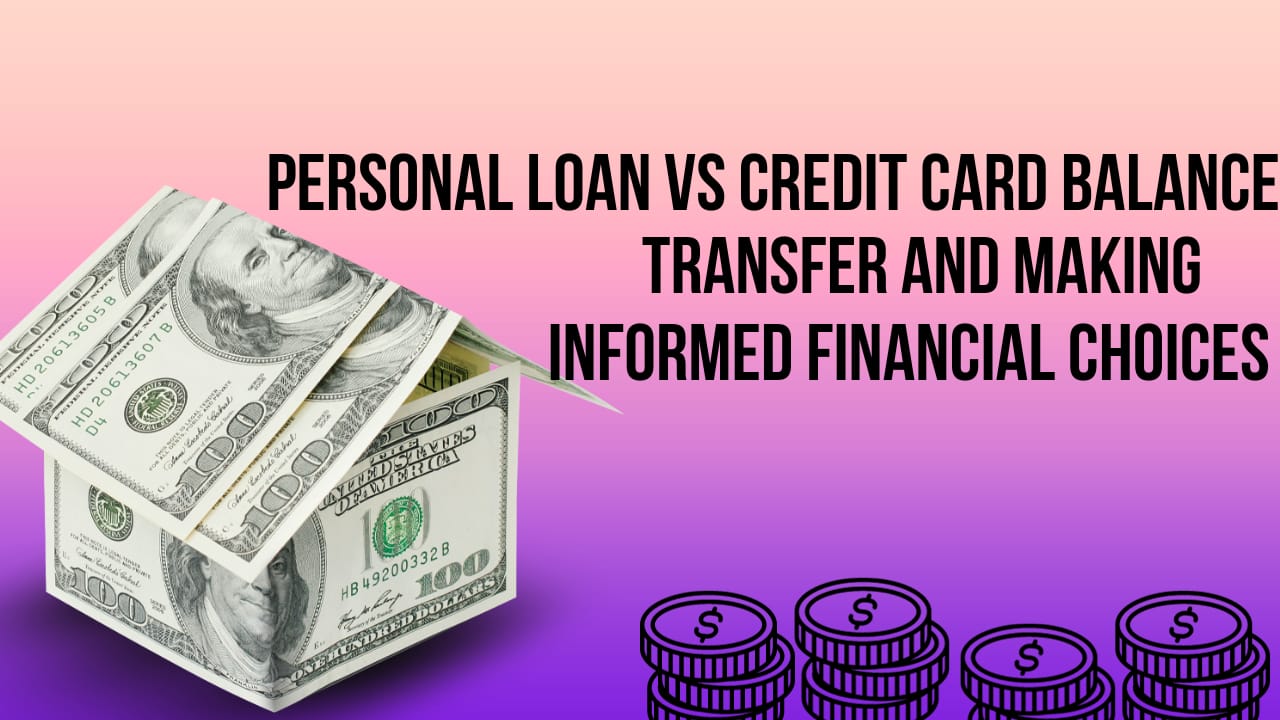Managing finances can be a complex task, especially when unexpected expenses arise or when you find yourself juggling multiple debts. In such situations, two common options that individuals often consider are personal loans and credit card balance transfers. Both financial tools offer unique advantages and considerations, and choosing between them requires a careful assessment of your financial goals and circumstances.
Understanding Personal Loans
A personal loan is a lump sum amount borrowed from a financial institution, such as a bank or credit union, with a fixed interest rate and a specified repayment period. These loans are versatile and can be used for various purposes, including consolidating debt, funding home improvements, or covering unexpected medical expenses. Here are some key features and benefits of personal loans:
1. Fixed Interest Rates:
One of the primary advantages of personal loans is the fixed interest rate. This means that your monthly payments remain consistent throughout the loan term, providing predictability and ease of budgeting.
2. Structured Repayment Plans:
Personal loans typically come with structured repayment plans, allowing you to make equal monthly payments. This can be advantageous for individuals who prefer a clear timeline for debt repayment.
3. Debt Consolidation:
If you have multiple high-interest debts, a personal loan can be used to consolidate them into a single, more manageable loan with a potentially lower interest rate. This simplifies your financial obligations and may save you money on interest over time.
4. Higher Loan Amounts:
Personal loans often allow for higher borrowing limits compared to credit card limits. This makes them suitable for larger expenses, such as home renovations or major life events.
Examining Credit Card Balance Transfers
A credit card balance transfer involves moving the existing balances from one or more credit cards to a new credit card, often with a lower interest rate. This strategy is commonly used to reduce interest payments and simplify debt management. Here are key considerations for credit card balance transfers:
1. Introductory 0% APR Periods:
Many credit cards offer introductory periods with 0% annual percentage rates (APR) for balance transfers. This can provide a window of time, usually 6 to 18 months, during which you can pay down your balance without accruing additional interest.
2. Variable Interest Rates:
Unlike personal loans, credit cards often come with variable interest rates. After the introductory period, the interest rate may increase based on market conditions and your creditworthiness.
3. Balance Transfer Fees:
While balance transfers can save you money on interest, it’s essential to consider balance transfer fees. Some credit cards charge a fee, typically a percentage of the transferred balance, which can offset the potential savings.
4. Limited Borrowing Capacity:
Credit card limits are generally lower than the loan amounts available through personal loans. If you have a significant amount of debt, a credit card may not provide a sufficient borrowing limit.
Choosing the Right Option for You
Deciding between a personal loan and a credit card balance transfer depends on your specific financial situation and goals. Here are some factors to consider:
1. Amount of Debt:
If you have a substantial amount of debt, a personal loan might be a more suitable option due to its higher borrowing limits. On the other hand, if your debt is manageable and you can pay it off within the introductory 0% APR period, a credit card balance transfer may be more cost-effective.
2. Interest Rates:
Compare the interest rates offered by personal loans and credit cards. If the interest rate on a personal loan is lower than the standard rate on your credit card, a personal loan may be a better choice for debt consolidation.
3. Repayment Preferences:
Consider your preferred repayment structure. If you prefer fixed monthly payments and a structured repayment plan, a personal loan may align better with your preferences. If you can manage variable payments and take advantage of the introductory 0% APR, a credit card balance transfer may be suitable.
4. Credit Score:
Your credit score plays a crucial role in the interest rates you qualify for. If you have a good credit score, you may be eligible for favorable terms on both personal loans and credit cards. However, individuals with lower credit scores may face higher interest rates, making the choice more challenging.
In conclusion, both personal loans and credit card balance transfers offer valuable solutions for managing debt and unexpected expenses. Assessing your financial goals, the amount of debt you carry, and your repayment preferences will guide you toward the option that best suits your needs. Whether you opt for the structured approach of a personal loan or the potential savings of a credit card balance transfer, making informed financial choices is crucial for achieving long-term financial stability.
Read Also: Personal Loans for Business Growth
